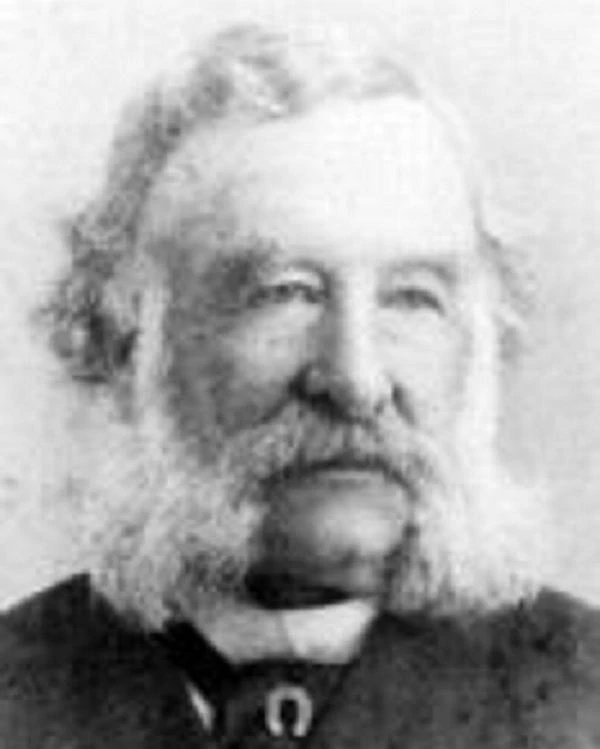Last updated: July 23, 2024
Person
Charles Gideon Davis

Find A Grave
Boston lawyer Charles Gideon Davis served on the 1850 Boston Vigilance Committee, an organization that assisted freedom seekers on the Underground Railroad.
Born in 1820, Charles Gideon Davis grew up in Plymouth, Massachusetts. He graduated from Harvard in 1820. He moved to Boston and worked as a lawyer beginning in the 1840s, eventually establishing his own practice at 7 Court Street. He married Hannah Stevenson in 1845 and had four children. Known as “a very strong anti-slavery man,” Davis associated with prominent anti-slavery leaders in Boston, including future Civil War governor and fellow Vigilance Committee member John A. Andrew.1
In the aftermath of the Fugitive Slave Law of 1850, Davis and others gathered at Faneuil Hall to organize the third and final iteration of the Boston Vigilance Committee. Within months of his appointment to this committee, Davis volunteered his legal services to defend Shadrach Minkins, the first freedom seeker arrested in Boston under the provisions of the Fugitive Slave Law. Davis considered the arrest of Shadrach “’damned dirty business.’” While Davis, Shadrach, and others waited in the courtroom, a crowd gathered outside. Davis overheard several of the guards saying that if the crowd attempted to rescue Shadrach by attacking the courthouse that they would “’Kill the negro.’” Davis responded to them “’you ought to have your throats cut.’”2
When the guards allowed Davis and fellow Vigilance Committee member Elizur Wright to exit the courtroom, the crowd outside grabbed the doors and forced their way in to rescue Shadrach. Davis described the rescuers as:
men ascending [the stairs] who had a very determined look, with their faces somewhat disguised by having their hair brushed down over the face and coats buttoned up around their cheeks.3
The rescuers succeeded and hid Shadrach safely in the city before sending him further on the Underground Railroad to freedom in Canada.
Authorities soon arrested several people, including Davis, and charged them with aiding and abetting Shadrach. They charged Davis with giving a signal to the rescuers. One witness stated that he heard Davis say, “’Take him out, boys- take him out.’” One officer said Davis pushed the door with his back and hand opening it “more than necessary” which allowed the rescuers to get in. Based on the weakness of the case against him, however, the judge found “there is no evidence which connects him criminally with a preconcerted plan of rescue” and discharged him.4
Because of “bronchial trouble,” Davis gave up the legal profession and returned to Plymouth in 1853 and bought a farm. He held several appointed positions over the years, including overseer of Harvard and trustee of the State Agricultural College. He also served as an elected representative of the General Court in the state legislature. In 1874, he became Judge of the 3rd District Court, a position he held until his death in 1903.5
His remains are buried in Vine Hills Cemetery in Plymouth.6
Footnotes
- National Park Service maps Davis at his office at 7 Court Street, Boston. William Thomas Davis, Plymouth Memories of an Octogenarian, (Plymouth: Memorial Press, 1906), p. 245-246, Archive.org Accessed 7/1/2024, “Judge Charles G. Davis,” Boston Evening Transcript, July 3, 1903, 15, George Adams, The Directory of the city of Boston : embracing the city record, a general directory of the citizens, and a special directory of trades, professions, &c., with an almanac from July 185, to July 1851., 134 Boston Athenaeum.
- "Members of the Committee of Vigilance," broadside printed by John Wilson, 1850, Massachusetts Historical Society, “Fugitive Slave Meeting,” Daily Evening Transcript, October 15, 1850, 1, Gary Collison, Shadrach Minkins: From Slave to Citizen, (Cambridge: Harvard University Press, 1997) 144, 121
- Collison, 124-125
- Collison, 141-146, Charles G. Davis, “United States vs. Charles G. Davis: Report of the Proceedings at the Examination of Charles G. Davis, Esq., on a Charge of Aiding and Abetting in the Rescue of a Fugitive Slave,” (Boston: White and Potter, 1851) 41. Archive.org
- “Judge Charles G. Davis,” Boston Evening Transcript, July 3, 1903, 15, William Thomas Davis, 245-246
- "Charles Gideon Davis," U.S., Find a Grave® Index, 1600s-Current - Ancestry.com
